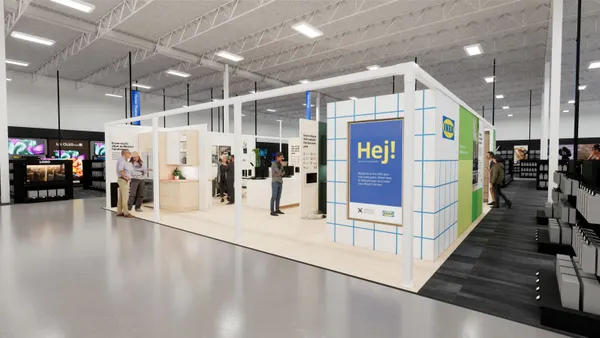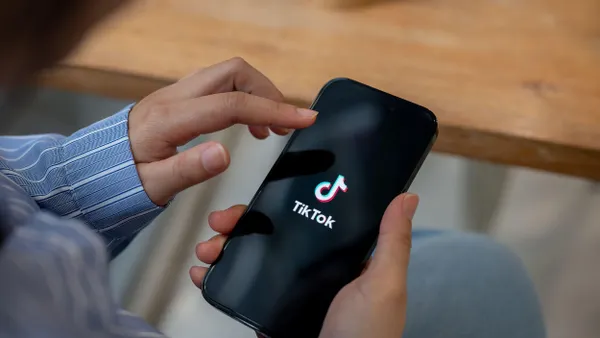Retailers say that lack of time, resources and in-house tech talent combined with lingering manual order fulfillment processes hold them back from high-growth omnichannel experiences.
Most retailers are well aware of the value that omnichannel fulfillment brings: greater customer reach, higher sales volumes, better customer satisfaction and higher customer retention levels. Yet, even though they understand what this approach can do for business — and for customers — some aren’t as far along in their journeys as they would like. Instead, they are looking to technologies that can remove major barriers standing in the way.
In a recent survey of 150+ retail organizations, conducted by Deposco and Retail Dive’s studioID, leaders were asked to identify their top three omnichannel obstacles. Here’s what they had to say.
1. No time or resources to spare
The biggest challenge is the need for more time and resources, with 35% of respondents identifying that as a top obstacle. “It’s almost a self-fulfilling prophecy,” said Will Lovatt, general manager and vice president at Deposco Europe. “Part of omnichannel fulfillment is finding efficient, effective ways to operate in this changing environment. The right technology enables you to be more flexible, offer better customer service and do more with less to improve profitability.”
In other words, investing in omnichannel fulfillment solutions creates the time and resources that many retailers need. Once they realize that, Lovatt explains, it becomes harder to find a reason to delay the deployment of automation and technology in your warehouse or distribution center (DC).
For example, using order fulfillment technology to integrate stock for online and offline channels makes real-time inventory tracking much easier, saves labor hours and boosts fulfillment efficiency and accuracy.
2. No internal tech talent to support deployment
Almost a quarter (23%) of retail leaders said their lack of in-house technology expertise hinders omnichannel fulfillment investments.
“Especially in mid-market retail, they’re not going to have large IT staffs,” explained Justin Stone, senior vice president of customer success at Deposco. “Finding a partner with a consultative approach is key — someone who can help you understand your business, determine what’s working and what isn’t, and navigate the landscape of fulfillment solutions to resolve your issues.”
In addition to finding the right partner, finding the right platform to help you manage inventory, coordinate order fulfillment and connect the two is critical. A modern, flexible, cloud-based fulfillment solution supports fast time-to-value so you start seeing benefits immediately — and your customers get the experiences they want every time they interact with your company.
3. Manual processes that don’t translate
Unsurprisingly, 21% of retailers indicated a reliance on manual order fulfillment processes and said there wasn’t a pressing need to move toward omnichannel.
If these same retailers are asked this question in a few years, they’ll likely respond differently. “When you don’t step up and satisfy those omnichannel demands, somebody else will,” emphasizes Stone. “That’s the point of omnichannel: The consumer orders what they want when they want it — at the location they want it — and you deliver on it. Either you’re part of that readily available network, or you’re not. If you’re not, then another retailer will be.”
Manual and repetitive workflows — using spreadsheets or paper to track inventory; pulling orders from the e-commerce system to re-enter into a point-of-sale system for in-store pickup; or uploading customer emails into your CRM, for example — will only bog down fulfillment and make it more difficult to grow and scale. Manual work also increases labor costs, opens the door to human error and slows customer delivery timeframes.
Finally, manual order fulfillment processes can’t provide the necessary visibility to understand inventory levels across all stores, warehouses, logistics partners and other locations. They can’t tell you what you have or where it is in real time. Without that information, omnichannel fulfillment becomes unachievable.
“For omnichannel fulfillment to work, you must have reliable sources of inventory across every location,” says Stone, “and they must be monitored in real time. A quality inventory solution that can track warehouses, dark store fulfillment centers and retail locations is an essential component. Once you’ve established this, you can build experiences from there.”
If your retail organization wants to stay relevant, manual fulfillment processes must give way to automation at some point — whether that happens now or in a few years. Making omnichannel moves now will help you avoid a mad rush later to catch up with competitors.
What’s standing in the way of your omnichannel strategy? Are you performing better or worse than other retailers regarding omnichannel performance and growth? Download the full research report to benchmark your progress and formulate a proven plan to move your omnichannel growth forward.










